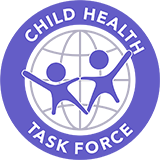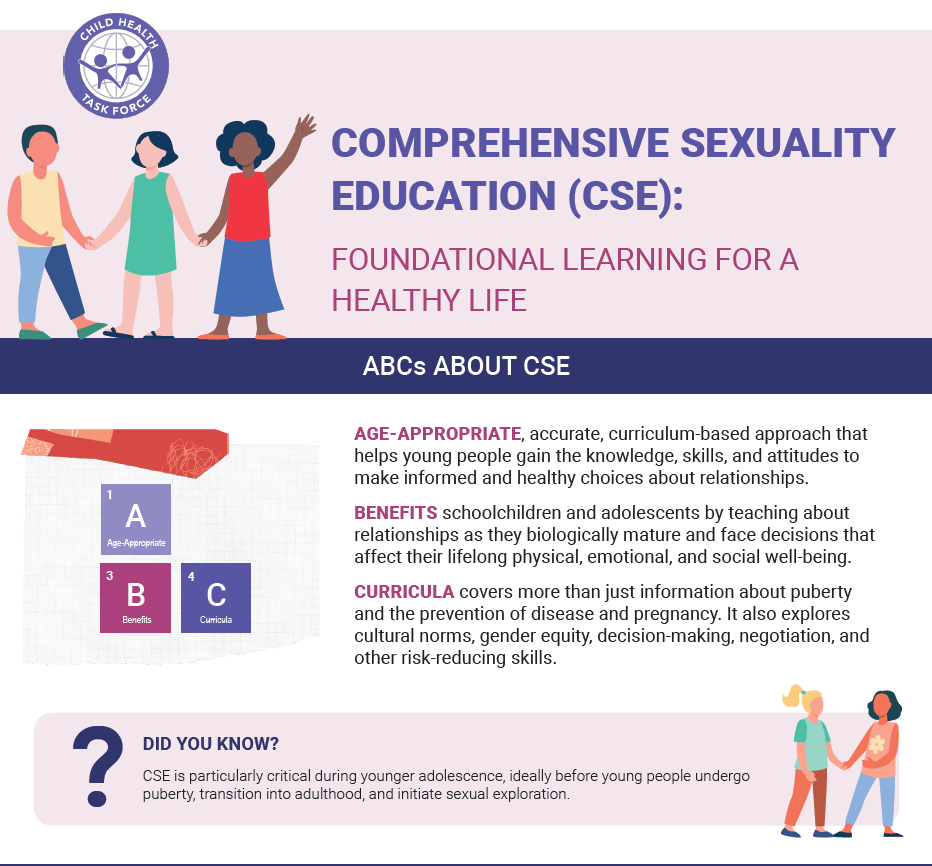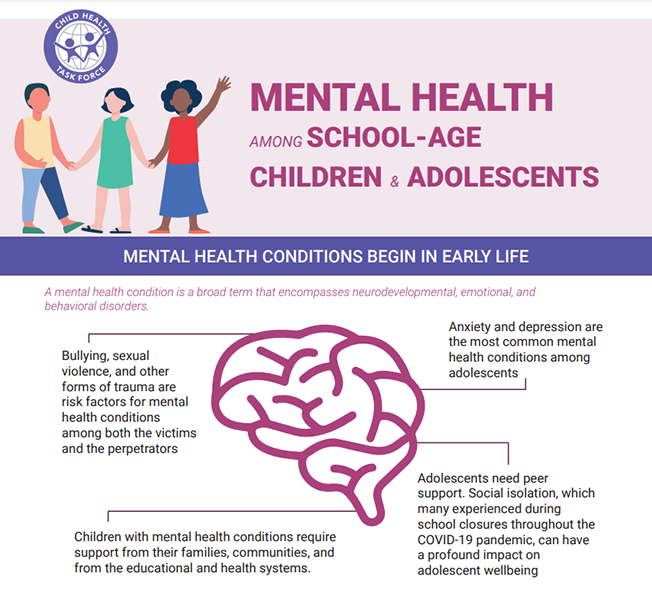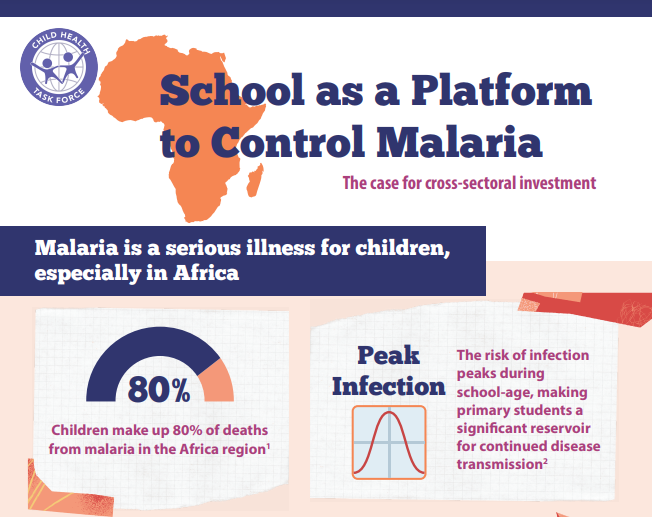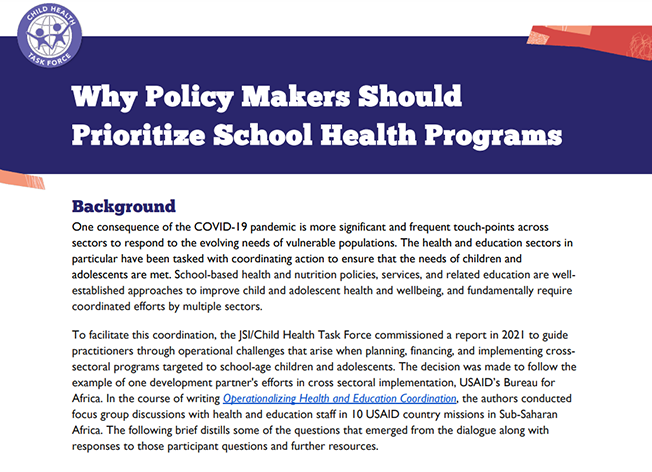School health programs are a win-win for educators, health professionals, and the school-age children and adolescents who they serve. The School Health and Nutrition Microlearning Toolkit distills findings from the report, Operationalizing Health & Education Coordination: Recommendations Surfaced through Interviews with Africa Bureau Missions, and complements the learnings with multimedia resources on key school health and nutrition interventions, including on malaria interventions in schools and mental health support.
School Health and Nutrition: From Principles to Practice
The Child Health Task Force has developed a self-paced e-learning course where learners will embark on a comprehensive journey through the multi-sectoral landscape of school health and nutrition. The learning experience is divided into three modules, each designed to build upon the last.
This package of multimedia microlearning products is designed for broad use by health and education policymakers, practitioners, USAID Country Mission staff, implementing partners, and donors to strengthen cross-sectoral collaboration and co-investment to improve students’ well-being and learning worldwide. The toolkit is co-financed by USAID Africa Bureau’s Health and Education offices and implemented by the Child Health Task Force Secretariat.
Videos
School Feeding: It’s More Than a Meal
This short animated video presents the rationale for providing children with daily meals in schools and illustrates how investments in school meal programs benefit the students as well as the local economy.
Evidence for School Health and Nutrition Programs
This three-minute animated video presents evidence of the benefits of school health and nutrition programming for children and the need for health and education sectors to collaborate and co-invest.
Infographics
Menstruation and Its Relevance for Schools
This infographic explores menstruation and its relevance for schools and approaches to make schools menstruation friendly. This resource is intended for USAID Mission staff, including health and education officers, as well as implementing partners, ministries of health and education, donors, and school administrators for consideration during program planning and co-investing.
Comprehensive Sexuality Education (CSE): Foundational learning for a healthy life
This infographic explores the importance of comprehensive sexuality education (CSE) for school-aged children, its benefits, and potential entry points for health and education sectors. This resource is intended for USAID Mission staff, including health and education officers, as well as implementing partners, ministries of health and education, donors, and school administrators for consideration during program planning and co-investing.
Mental Health Among School-Age Children & Adolescents
This infographic details the importance of recognizing mental health conditions among school-age children and adolescents, and explores the three areas where schools can play a critical role in supporting learners: cultivating safe learning environments, raising awareness, and detecting mental health conditions.
School as a Platform to Control Malaria: The case for cross-sectoral investment
This infographic presents the rationale for utilizing the school as a platform to prevent and control malaria infections among school-age children. It also identifies key roles that the health and education sectors can undertake to support malaria prevention and control efforts, with specific opportunities for intervention in advance of and during periods of transmission, as well as actions that remain relevant throughout the academic year.
View and download the infographic (PDF, 40.9 MB)
Other Resources
Why Policy Makers Should Prioritize School Health Programs
This six-page brief distills findings from the USAID report Operationalizing Health and Education Coordination for a broader audience of implementers, policymakers, and practitioners. The brief responds to the themes that emerged during focus group discussions with health and education staff from 10 USAID country missions in Sub-Saharan Africa, and provides operationally-oriented resources to further guide cross-sectoral program planning.
This Microlearning Toolkit is a living site. We encourage you to share with us how you use these products and to suggest additional tools to further build this School Health and Nutrition Microlearnings Toolkit! Share with us in this form.
